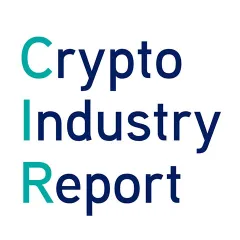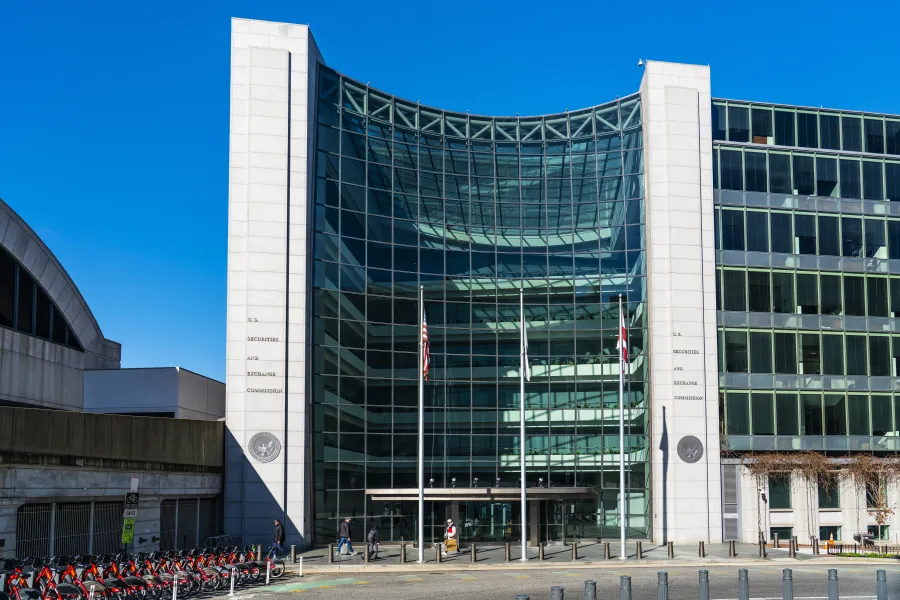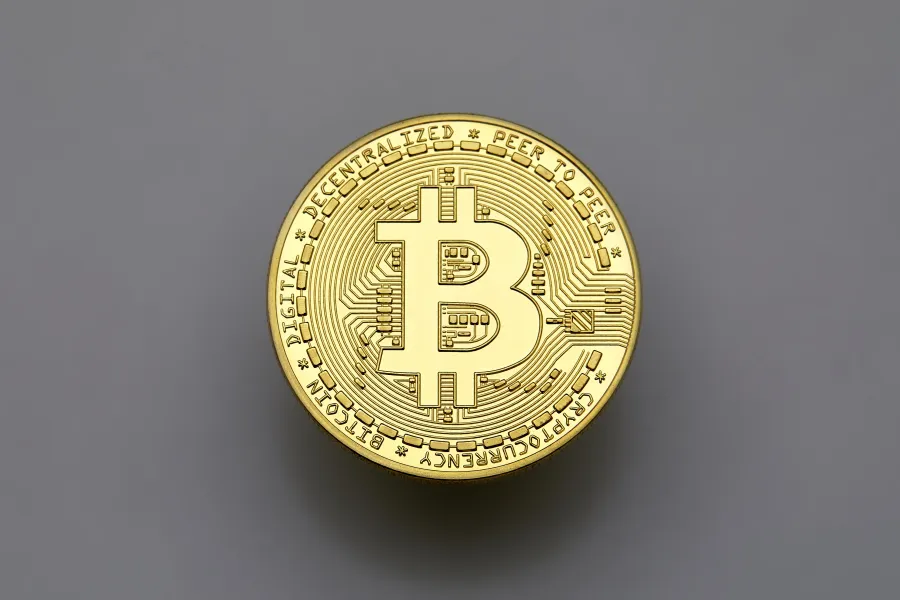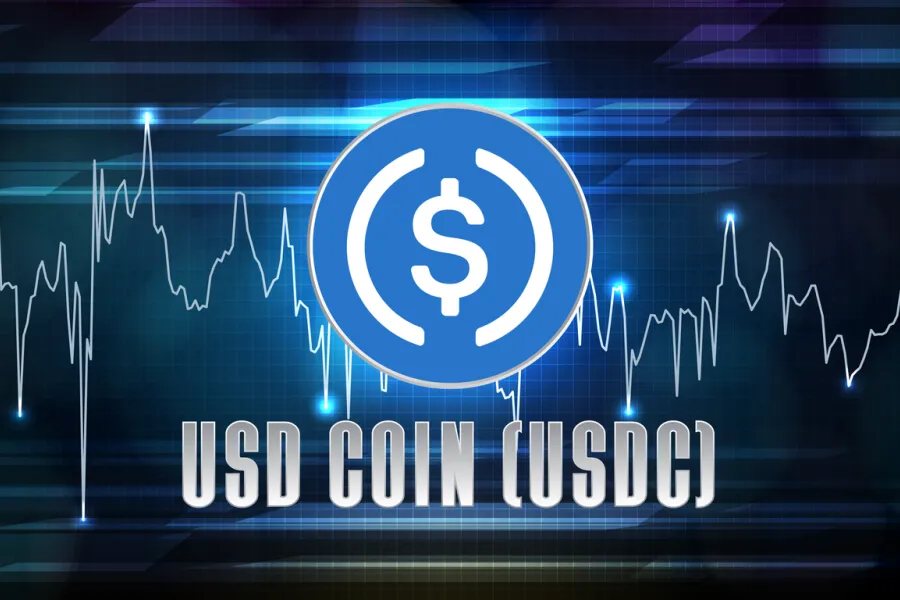Stablecoins: Why all the hate?
This week, our blockchain experts assessed the following topics:
- Stablecoins: Why all the hate?
- Bitcoin’s beautiful way of regulating itself
- Switzerland’s crypto ecosystem is as strong as ever
- Regulators seizing their chance to clamp down on crypto
- Market Update: Are we in a bear market?
Our bi-weekly Crypto Industry Report provides you with valuable information on the global crypto industry – picked and analysed by our blockchain experts.
Stablecoins – Why all the hate?
Over the last three years, stablecoins total market capitalisation has tremendously grown from less than 3 billion USD to well over 100 billion USD. At the same time, over the course of this year, between 15 to 30 billion USD have traded in these stablecoins on any given day. The undisputed leader among these stable cryptocurrencies is still US Tether (USDT) that boast a market cap of about 65 billion USD, followed by USD Coin (USDC), whose market capitalisation is already north of 20 billion USD as well.
This explosion in stablecoin usage has caught the attention of regulators, technocrats and politicians alike. Only recently Federal Reserve Chairman Jerome Powell took a stance on stablecoins calling for proper regulation of these new digital financial instruments. The US central bank’s president echoed what was already expressed by Fed Governor Lael Brainard back in May, when she said stated that the US payment system’s stability could be at risk with too great an exposure to stablecoins.
The overall risks are to be discussed by the President’s Working Group in due time. While US Treasury Secretary Janet Yellen will be part of this meeting, representatives from the Office of the Comptroller of the Currency (OCC) and people from the FDIC will be present as well. Potential risks stemming from stablecoins growing in the shadows are mainly derived from what is known as Free Banking, in which private banks issued their own dollar notes. As a recent paper argues, this historic era was highly unstable with bank notes trading at a discount to par leading to many bank crises and ultimately to the much needed foundation of the Federal Reserve System.
So, while central bankers and some economists are making a case against privately issued stablecoin in order to position a central bank digital currency as a better alternative, some commentators object and call for a straightening of facts. According to this view, unhampered free banking has worked rather well, indicating that potential devastating risks from present-day stablecoins might be overblown. After all, most stablecoins today trade at par to the dollar and are widely used as deposits in both DeFi and centralised cryptocurrency lenders.
As it seems, the last word on this issue has not been spoken yet. It will be interesting to see how the regulatory treatment of stablecoins will develop, given that not every US central banker is hostile towards stablecoins. In the meantime, El Salvador that weeks ago announced to make Bitcoin legal tender in the country is now said to be planning the release of a US dollar backed stablecoin called Colón-Dollar.
Bitcoin’s beautiful way of regulating itself
Bitcoin’s hashrate recently dropped more than 50%. The hashrate can be described as the total amount of combined computational power that miners deploy in order to mine new bitcoin units. A significant drop like we experienced over the course of the last two months means that a substantial number of miners has stopped mining and providing computational power to the Bitcoin network.
With the hashrate down and less miner activity, the Bitcoin blockchain becomes slower. Because there is not enough mining power anymore the average block time increases. In the weeks of June, the average block time was almost 20 minutes. Fortunately, Bitcoin has its own, in-built mechanism to adjust to new circumstances. By adjusting the difficulty, it takes to mine new Bitcoin, the average block time can be brought down to Bitcoin’s normal 10-minutes target interval.
Through what is called Bitcoin’s difficulty adjustment mechanism, the network can self-adjust and adapt to happenings in the real world. By downsizing its difficulty, Bitcoin mining becomes easier, which opens up mining for a broader amount of entities again – entities that were not able to profitably mine when Bitcoin’s difficulty was higher.
This brilliant mechanism goes to show the resilience of the Bitcoin network as it is programmed to happen every 2016 blocks, which is about two weeks. After Bitcoin has seen fourth straight downward difficulty adjustment, the next one that will happen on 31th of July is projected to be un upwards adjustment once again.
Switzerland’s crypto ecosystem is as strong as ever
The prominent Swiss crypto venture capital firm CVVC has published an extensive report of up to almost 80 pages on the current state of the crypto asset and wealth management. The report covers a wide range of topics. The case for Bitcoin as digital gold is discussed. Also, digital assets are described as a new exciting investment universe. There’s a section on the tokenisation of everything as well as a chapter on decentralised finance. Not missing is an evaluation of stablecoins and central bank digital money. Also covered in detail is the newly adopted Swiss distributed ledger technology act.
Not least because of its regulatory and taxation clarity, Switzerland is still in a good position when it comes to blockchain adoption as the report highlights. Although there is clear competition – mainly from the US that has a strong homegrown digital asset investment industry – Switzerland ecosystem is vibrant. According to the latest CV VC Top 50 report, the Crypto Valley hosts 960 companies and about 5,200 jobs.
As the author of the report writes, many service providers that were interviewed for this report confirmed that 2021 was indeed the tipping point for the acceptance of cryptocurrencies and digital assets. Some milestones for the Swiss Crypto ecosystem mentioned in the report are: The announcement of Swiss insurer AXA to start accepting bitcoin for payments. Or the regulatory approval Geneva-based company Taurus got for the first independent, regulated market place for digital asserts. Another milestone that is brought up is the fact that Deutsche Börse Group acquired a majority in Crypto Finance.
Regulators seizing their chance to clamp down on crypto
As Bitcoin’s prices falters ever lower, the regulatory crackdown on crypto is continuing. As we indicated in the last report, Binance is currently experiencing multiple clampdowns coming from different regulatory jurisdictions. The latest service provider to cut ties with the largest cryptocurrency exchange is Clear Junction. Losing the partnership with this global payment solution provider, Binance not only loses an important partner in Europe but will no longer be able to utilise deposits from UK’s Faster Payments Service (FPS) and the Single Euro Payments Area (SEPA).
In an attempt to show some first signs of cooperation, Binance has announced that it is ceasing its stock tokens trading offering. This unconventional offering was already deemed to be in violation of German securities laws by Germany’s regulator BaFin. Now that another regulator, Hong Kong Securities and Futures Commission raised similar concerns, the crypto exchange figured it’s time to halt these activities.
In the US, the crypto lending poster child BlockFi is ordered to stop accepting customers in the state of New Jersey. The order was issued by the state’s attorney general. While experts are yet to figure out what this could mean, BlockFi’s CEO Zac Prince reassured that the platform would remain fully operational for its existing clients in New Jersey.
Even on the protocol level, regulators want to increase their say. On July 16th the owner of the European ATM operator General Bytes took to the bitcoin-dev mailing list to propose a new Bitcoin Improvement Proposal (BIP). With this new proposal, changes to Bitcoin’s protocol would be implemented that let an ATM provider like General Bytes be more easily compliant with the Travel Rule. This rule states that when funds are transacted between virtual asset providers (VASPs), these providers need to make sure the funds are sufficiently identifiable.
Such implementations on the protocol level would obviously make it easier for companies dealing with Bitcoin to comply with regulation combating anti-money laundering and terrorist finance. At the same time, many Bitcoiner would consider such a move a sort of regulatory capture of a neutral piece of software. In the unlikely case that such an update would make it into Bitcoin’s software protocol, it would probably have a hard time getting accepted by full nodes.
Despite the many uncertainties and issues surrounding crypto-land at the moment, not everything is bleak. As is reported by Fidelity’s digital asset arm, further regulation will eventually help make crypto asset more accessible to investors that – according to its study – are still highly in favour of gaining exposure to this new asset class. Fidelity’s confidence is most evident in the fact that they recently announced plans to expand their crypto staff by 70%.
Market Update: Are we in a bear market?
While many people have been in denial about a bear market looming for Bitcoin, bearish sentiment seems to take over ever more. Especially Crypto Twitter is increasingly negative with influencers calling for a Bitcoin price in the 20k range. Also, the famous Bitcoin Fear and Greed Index is showing levels of extreme fear.
On the technical level, some traders are spotting some decent support at 28k. If, however, bears make it through this level, prices within 24k to 25k would probably follow. If support broke down at these prices as well, a re-testing of the 2017 all-time high at 20k USD would be in play.
In the short-term then, things look rather shaky and undecided. Interestingly enough, on a macro level though the tides seem to be turning positive again for bitcoin. Yields of government bonds are falling, which pushes the total amount of negative-yielding debt up. Obviously, negative-yielding debt is a catalyst for store of value assets like gold and bitcoin. Even though there seems to be a decoupling of the Bitcoin’s price and this emerging trend, the question remains how long this will be the case.
Apart from macro factors pushing into a positive direction for Bitcoin, maybe some random catalyst is needed to push bitcoin of the recent lows back into bullish territory. Some speculated that the virtual gathering of Cathie Wood, Jack Dorsey and Elon Musk could have turned out to be one such catalyst. As part of a highly informative conference, the three of them met online to discuss Bitcoin as a tool for economic empowerment. Following the talk, the price of Bitcoin did indeed rally a bit back to 32k. What this really means, will only be shown in the days to come.
Some people assume that ether might be the one crypto to turn the market around later in August, when its London fork and with it’s the highly anticipated EIP-1559 is activated. With this technical update, ether will likely turn deflationary going into late 2021 and the years to follow. So, while neither bitcoin nor ether are currently making any real headlines, it’s the blockchain-based game Axie Infinity that is getting all the charm. The NFT-focused game that is pioneering a play-to-earn model has seen a meteoric uprise, mainly in developing nations like the Philippines. Some believe that blockchain-based gaming will be the first application to truly make blockchain mainstream.
Adding to the phenomenal news as well has been US crypto exchange FTX. They announced a 900 million USD funding round at a valuation of 18 billion USD – which goes to show that, despite the cryptocurrency market’s recent crash, enthusiasm for this asset class is still huge.
Share post

Auch interessant

To be continued: SEC pushes back at Coinbase
SEC pushes back against Coinbase's claim of no regulatory jurisdiction, stating the crypto exchange knowingly violated securities laws. Meanwhile, Gemini, owned by the Winklevoss twins, files a lawsuit against Digital Currency Group and CEO Barry Silbert alleging fraud and deception following the collapse of a lending venture. The Bank for International Settlements survey reveals that 93% of central banks are working on Central Bank Digital Currencies (CBDCs) which are seen as potential geopolitical policy tools and a challenge to the dollar's dominance. The race for a Bitcoin ETF intensifies, with BlackRock refiling its application featuring Coinbase as the market surveillance partner, as the Grayscale Bitcoin Trust's discount to net asset value narrows, potentially indicating the transformation into a proper ETF.

BlackRock fever: The ETF filing spree and institutional appetite
BlackRock filed for a Bitcoin ETF with the SEC, inspiring similar applications from firms like WisdomTree, Invesco, and Fidelity, and boosting Bitcoin's value. Traditional finance institutions such as Fidelity and Nasdaq are showing increased interest in crypto, with moves towards exchange and custody services. The defunct crypto exchange FTX, under new CEO John Ray III, is planning a potential revival after recovering significant assets. Meanwhile, the IMF is developing a global CBDC platform for cross-border transactions and DAI, a major stablecoin, is diversifying its backing from USDC to include real-world assets.

SWIFT explores blockchain interoperability
SWIFT has partnered with Chainlink to experiment with leveraging its infrastructure for transferring tokenized value across blockchain networks. The trials will address interoperability, regulatory challenges, and operational drawbacks for financial institutions in a blockchain environment. Chainlink will provide connectivity between private and public blockchains. SWIFT's findings will be published later this year.

China wants an Internet 3.0, while Hong Kong gears up for crypto trading launch
China is striving for advancement in Internet 3.0 technologies, with Beijing's white paper outlining plans to invest in the development of the metaverse and Web3 tech such as non-fungible tokens, but not cryptocurrencies due to the country's previous ban. Meanwhile, Hong Kong is launching its new crypto trading regulations, allowing retail investors to participate from June 1, 2023, with exchanges like Huobi Hong Kong beginning to offer spot trading to retail and institutional clients. Furthermore, the Cybersecurity and Technology Crime Bureau of the Hong Kong Police Force is launching a metaverse platform, 'CyberDefender', to educate the public about potential threats and crime prevention in the metaverse.

BRC-20: Innovating on Bitcoin is the new cool
A new Bitcoin “token standard” called BRC-20 is the hottest thing right now in the crypto space. It was introduced in March 2023 by a pseudonymous person called Domo. Bitcoin Request for Comment 20 (BRC-20) is an experiment that brings fungible tokens to the Bitcoin blockchain using the Ordinals protocol. Ordinals rely on ordinal theory, enabling the identification and tracking of individual satoshis within Bitcoin's existing supply, while also allowing them to be inscribed (associated) with data. Through this technique, satoshis (sats) are given ordinal numbers starting with zero. Anyone can add a script file to a sat to create and transfer a BRC-20 token on the Bitcoin blockchain. BRC-20 tokens are created using three functions: deploy, mint, and transfer.

US versus EU: Giants fighting for regulatory clarity
It is official now: The European Parliament voted overwhelmingly in favour of Markets in Crypto Assets (MiCA), legislation that will guide the crypto sector in all 27 European Union member states. 517 parliament members voted for it, while 38 voted against it. This approval makes Europe the first continent with comprehensive rules for cryptocurrencies. Also, it means that all EU member states will have unified crypto regulations. So, if a crypto business is approved in one EU member country, it could easily expand operations to another member state. The EU’s milestone was lauded by Binance as well as Kraken and Coinbase.

Ethereum: Another milestone reached with the Shanghai Update
On April 12, 2023, Ethereum successfully executed the planned Shanghai update also known as Shapella. The upgrade allows validators to unstake their staked ETH and withdraw their rewards, as well as staked ether if chosen. Now that another level of uncertainty has waned for the biggest smart contract blockchain, this new feature could attract more investors to stake their ether.

CFTC versus Binance:
Clash of the titans
The world’s leading crypto exchange by volume, Binance, alongside its CEO, Changpeng Zhao, and ex-Chief Compliance Officer, Samuel Lim, are being sued by the US Commodity Futures Trading Commission (CFTC).

Stablecoin USDC briefly lost its
peg. What do we learn from this?
One of the top stablecoins by market cap, USD Coin (USDC), de-pegged briefly from the US dollar on March 11 following the collapse of Silicon Valley Bank (SVB). Circle, the stablecoin’s issuer, held $3.3 billion in USDC reserves with the bank, which caused panic as investors rushed to withdraw their funds, assuming USDC could implode because of insufficient backing. However, the amount represented less than 8% of the stablecoin’s reserves.

Ethereum Shanghai upgrade pushed to April: Will there be too much selling pressure?
Ethereum stakers have been eagerly awaiting the Shanghai upgrade, which will enable them to withdraw their staked ether. Stakers’ funds have been locked since Ethereum introduced the proof-of-stake Beacon Chain in December 2020. The upgrade was originally slated to take place sometime in March but was pushed by about two weeks to April during a recent execution layer meeting.